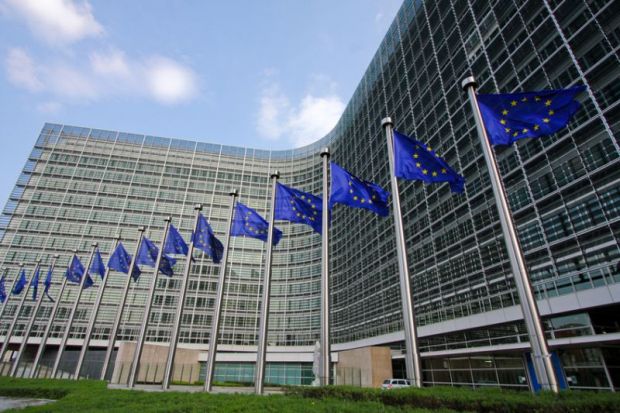Recently, the European Commission’s new director general for research and innovation (R&I), Marc Lemaître, has given the first indications of his future priorities. One of these is the broader international dimension of European research.
Specifically, Lemaître affirmed the need to be open to third countries outside the European Union, noting that Horizon Europe’s value increased with the partners associated to it. But he also underlined the need for setting limits to collaboration where security concerns existed.
This goes right to the heart of a debate that will be critical not just for the EU’s current R&I strategy, but also for how Horizon Europe’s successor, the 10th framework programme (FP10), will be framed. In the past few years, the concern has clearly been growing that Horizon Europe and its successor should serve the EU’s strategic interests. Given this ambition, the inevitable question is whether the EU’s desire for “strategic autonomy” is compatible with the openness of Horizon Europe and its successors for third-party collaboration.
The question of international collaboration is fundamental not just to the EU as Europe’s key funder. The EU also exercises an important agenda-setting power in the context of the European Research Area, created to better align European and national R&I systems. These are currently still quite far apart when it comes to dealing with questions around foreign interference. As initiatives such as open science or research assessment reform succeed in producing a common European approach, they raise the question of global equivalence and international reciprocity.
It is likely that, over the next few years, the EU will reinforce collaboration with trusted, “like-minded” partners, as seen with last month’s inclusion of New Zealand into Horizon Europe. This approach has been affirmed in the G7 leaders’ most recent communiqué, which calls for “responsible global science and technology cooperation”, especially with relation to emerging technologies, “with partners sharing common values and principles in R&I”. If the EU is serious about what it has signed up for, the implications will be significant.
To be sure, it is hard to transform “values and principles” into unambiguous criteria for policy decisions. But it would be possible to insist on reciprocity (for instance, on access to databases or IP protocols) and common standards (in relation to research ethics). Few researchers would argue against the idea that research relations must be fair. But what this means in practice, and the proportionality of limiting collaboration with researchers in systems not deemed to be reciprocal, will be subject to intense debate.
Inevitably, the desire to collaborate with “partners sharing common values” increases the urgency of associating with the UK and Switzerland, as well as Canada, Japan and South Korea. Indeed, it draws attention to the cumbersome and long-winded ways in which associations are agreed. If the EU wants to keep its partners close through R&I association, this process should take months, not years.
But the EU cannot limit its international strategy to the question of association. The AU-EU Innovation Agenda, published on 20 July, is the first concrete articulation of a global approach that recognises the need for genuine partnership across the globe. With its focus on a partnership with Africa characterised by equity, long-term collaboration and talent circulation, the agenda stands for a global strategy that is sensitive to the strengths different R&I systems bring to collaborative research, and the needs that come with this. If the EU wants to be a strong global partner in R&I, it cannot limit its attention to the strongest R&I nations, and it needs to remain sensitive to local contexts.
This raises perhaps the most important question of all, which relates to whether the EU keeps the global context to its own societal challenges in mind in the framing of research priorities. The EU may choose to concentrate its R&I spending on immediate policy concerns such as the new European Bauhaus, the creative and design component of the €55 billion (£47 billion) European Green Deal initiative or the production of semiconductor chips in the EU. But the more the EU shapes the research programme according to its own policy agenda, the more it undermines the attractiveness of Horizon to global partners.
The question about the international dimension of European R&I is thus about the heart and soul of European research policy. If the EU denigrates research spending to becoming a tool of its industrial policy, it will be neither attractive to global partners nor to top-quality researchers within the EU. And if the European Research Area is exclusively inward-looking, it will distance European research practices from leading R&I nations.
But if the EU appreciates the significance of research spending to address our complex – and existential – challenges in close global dialogue, it ensures not just the attractiveness of Europe’s researchers for global collaboration. It will future-proof the EU to remain at the epicentre of global research and global knowledge production. It will enhance the EU’s capacity as a global research and innovation actor that is uniquely influential globally, as a collaborator, a funder and as an agenda-setter.
Jan Palmowski is secretary general of the Guild of European Research-Intensive Universities.
Register to continue
Why register?
- Registration is free and only takes a moment
- Once registered, you can read 3 articles a month
- Sign up for our newsletter
Subscribe
Or subscribe for unlimited access to:
- Unlimited access to news, views, insights & reviews
- Digital editions
- Digital access to THE’s university and college rankings analysis
Already registered or a current subscriber? Login








